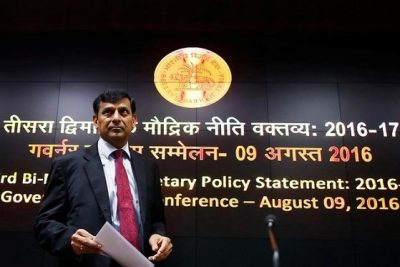Our student team member Nikhita Basti reached out to Ravi Kumar Gupta to find out more about the Monetary Policy Committee. Here are his thoughts -
The Monetary Policy Committee (MPC) had its first meeting on October 4, 2016, marking a significant change in eight decades of RBI’s existence.
In the wake of MPC, it becomes interesting to look into causes and concerns that led to its creation. According to former RBI Governor Raghuram Rajan, having one person decide on the key policy rates makes the affairs ‘personal’ in nature. This flaw can be corrected by transferring the decision-making process to a committee. The two most important recommendations by the Urjit Patel led the committee, appointed by the Reserve Bank on reform of monetary policy framework, were to have the main objective of monetary policy to control inflation within a specified target (2%-6%) and to have a committee to decide on that monetary policy.

Last year when RBI adopted inflation targeting framework, it became necessary to pave the way for the MPC, because such a framework generally calls for committee-based decisions. The committee consists of six members, three appointed by RBI and Government each. It will be headed by the Governor, but he loses the veto power. The recommendations of the committee will be binding on the RBI. The Governor can only enjoy the deciding vote in case of a tie. The structure of the MPC was criticized initially because it consisted of three appointments by the government. Many argued that control of monetary policy by the government through MPC may not be desirable for the whole economy, but when the names of members were disclosed, criticisms died down.
The committee enhances the credibility of the Reserve Bank. It would result in wider acceptance of monetary policy and it would surely reduce constant friction between the RBI and the government on interest rates. Two governors in the past have even resigned due to this conflict. The government can also communicate its views in writing, which would reduce verbal criticism to some extent.
The government has appointed Chetan Ghate, Professor at Indian Statistical Institute, Pami Dua, Director at Delhi school of Economics and Ravindra Dholakia, Economics Professor at IIM-Ahmedabad. All three are distinguished personalities in the field of Economics and will, therefore, be less susceptible to corporate lobbying and other pressures.
The committee is also required to make public- minutes of the meeting within 14 days. The minutes of the meeting would be quite detailed - including disclosing each member’s vote to a proposal and their reasoning behind doing so. Now, this might mar the process as the members may come under criticism. The ideal situation should be where just the summary of the meeting and various perspectives discussed are disclosed.
Committee based decisions on monetary policy approach is not new and is prevalent in most developed economies namely UK, US, New Zealand, Australia etc., with varying degree of freedom given to the committee. India seems to have overdone it by making it mandatory to make public the minutes of the meeting in detail.
It appears that the introduction of MPC has solved most of the problems circling around monetary policy making. But this assumption may not be the case. One of the main issues today is the reluctance of commercial banks to pass the rate cuts and in this regard even Marginal Cost of funds based Lending Rate (MCLR) has not been very effective. All the hard work of MPC would prove fruitless if the benefits of monetary policy do not trickle down to the grass root level.
-------------
About the Author:

Ravi Kumar Gupta is a first year PGDM 2016-2018 student studying at IIM Ranchi. He is a finance enthusiast. He loves to follow politics and stock markets regularly. He also has a passion for travel.
